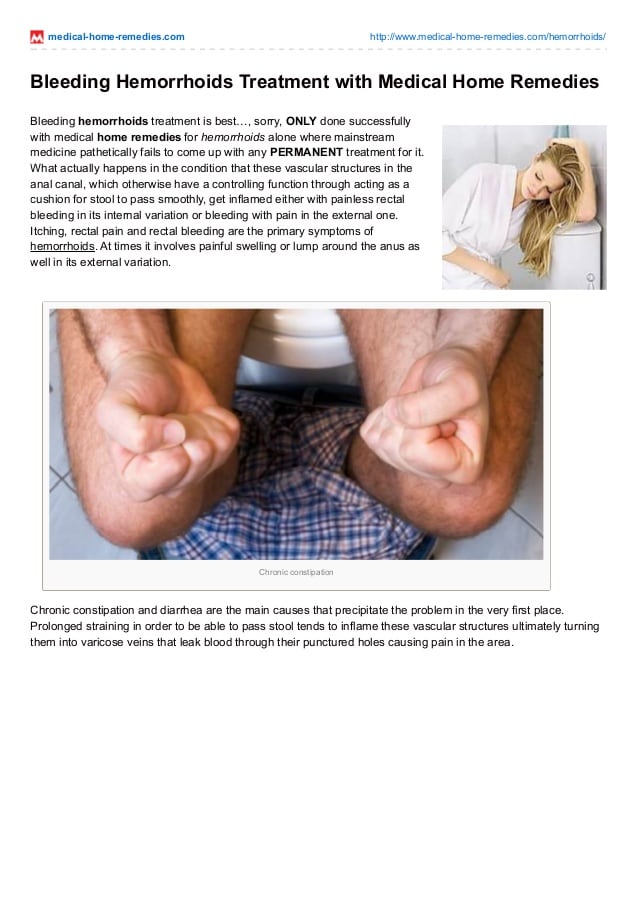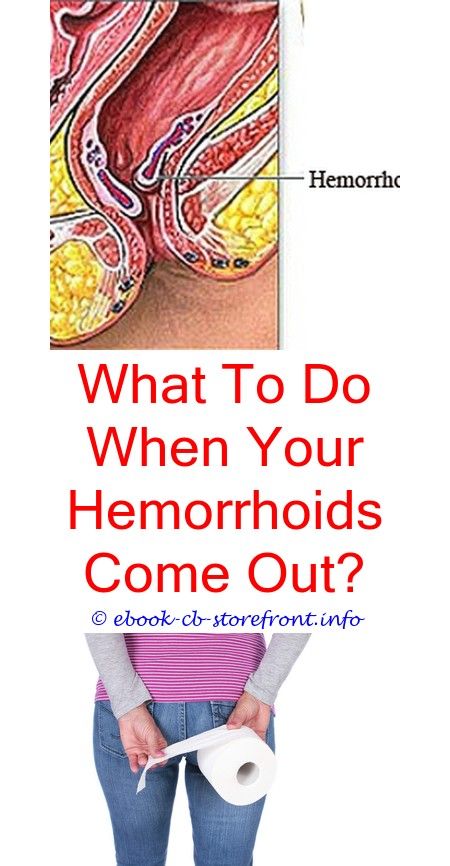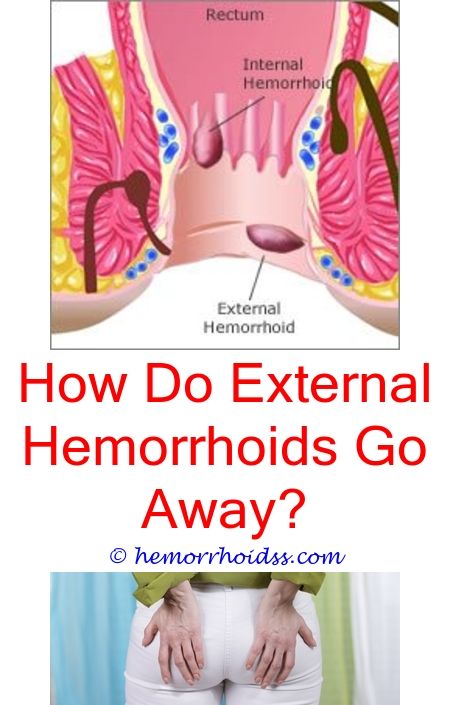Southern Cross Medical Library
The purpose of the Southern Cross Medical Library is to provide information of a general nature to help you better understand certain medical conditions. Always seek specific medical advice for treatment appropriate to you. This information is not intended to relate specifically to insurance or healthcare services provided by Southern Cross. For more articles go to the Medical Library index page.
Whom Do Hemorrhoids Affect
Although most people think hemorrhoids are abnormal, almost everyone has them. Hemorrhoids help control bowel movements. Hemorrhoids cause problems and can be considered abnormal or a disease only when the hemorrhoidal clumps of vessels enlarge.
Hemorrhoids occur in almost everyone, and an estimated 75% of people will experience enlarged hemorrhoids at some point. However only about 4% will go to a doctor because of hemorrhoid problems. Hemorrhoids that cause problems are found equally in men and women, and their prevalence peaks between 45 and 65 years of age.
Dont Suppress Your Urge To Use The Bathroom
Many people think its better to hold their stool in or reduce the number of times they use the restroom. The idea is that this helps them heal more quickly and stop bleeding. Unfortunately, thats not the case.
The reason is simple: when you accumulate more waste in your body, its harder to get rid of it without pain or discomfort. Its also not good for you. You end up keeping toxins in your body. These can then cause diseases.
Youre in a lot of pain because of the hemorrhoids, but you need to be brave and go to the bathroom. If you put it off, it just ends up being more unpleasant and painful. It will take longer to heal, and youll be more likely to start bleeding again.
Read Also: How To Tell If You Have Hemorrhoids
Avoid Constipation And Straining At The Toilet
Keep the stools soft, and don’t strain on the toilet. You can do this by:
- Eating plenty of fibre .
- Have lots to drink. Most sorts of drink will do but too much alcohol and caffeine should be avoided.
- Fibre supplements. If a high-fibre diet is not helping, you can take fibre supplements such as ispaghula, methylcellulose, bran or sterculia.
- Avoid painkillers that contain codeine, such as co-codamol, as they are a common cause of constipation. However, simple painkillers such as paracetamol may help.
- Toileting. Go to the toilet as soon as possible after feeling the need. Do not strain on the toilet.
- Regular exercise helps to reduce constipation.
These measures will often ease piles symptoms such as bleeding and discomfort. It may be all that you need to treat small and non-prolapsing piles . Small grade 1 piles often settle down over time.
See the separate leaflets called Constipation, Constipation in Children and Fibre and Fibre Supplements for more information.
Natural Remedies For Hemorrhoids

- By Matthew Solan, Executive Editor, Harvard Men’s Health Watch
Hemorrhoids are painful, unpleasant, and, um, well, difficult to talk about. But they actually are quite common: about half of people over age 50 have had them. However, theyre easy to treat and manage.
Hemorrhoids can be troublesome and embarrassing, but they often shrink on their own with simple self-help care and over-the-counter remedies, says Dr. Howard LeWine, assistant professor of medicine at Harvard Medical School.
Also Check: How To Shrink Hemorrhoids Permanently
When Is It Time To See Your Doctor
While most people think of hemorrhoids as a minor problem, they can be very painful, explains Dr. Buzas. Knowing when to treat conditions such as hemorrhoids on your own and when its better to seek help can help you avoid unnecessary complications.If youre experiencing any of the following situations related to your hemorrhoids, make an appointment to see your doctor:
- You experience rectal bleeding or see bright red blood on your toilet paper.
- You have pain and discomfort in your rectum or anus.
- Youve tried over-the-counter remedies for more than one week without relieving your symptoms.
- You have bowel movements that are maroon or dark like tar in color, which can be a sign of bleeding.
If your rectal bleeding wont stop and you feel dizzy or faint, you should consider it a medical emergency that warrants a trip to the emergency room.When you see your doctor for hemorrhoids, youll first discuss your symptoms. Be sure to answer any questions directly and honestly, to get the best diagnosis. Your doctor will then examine you for external hemorrhoids, internal hemorrhoids and other potential issues.
Getting your hemorrhoids checked out is no different than and as important as getting a routine colonoscopy, Pap test, mammogram or prostate exam, Dr. Buzas notes. Theres no reason to be reluctant or delay your care.
Diagnosis And Classification Of Hemorrhoids
The most common presentation of hemorrhoids is painless rectal bleeding during defecation with or without prolapsing anal tissue. The blood is normally not mixed in stool but instead coated on the outer surface of stool, or it is seen during cleansing after bowel movement. The blood is typically bright red since hemorrhoid plexus has direct arteriovenous communication. Patients with complicated hemorrhoids such as acutely thrombosed external hemorrhoids and strangulated internal hemorrhoids may present with anal pain and lump at the anal verge. It is uncommon that patients with uncomplicated hemorrhoid manifest any anal pain. In fact, severe anal pain in patient with hemorrhoids is more likely due to anal fissure and anorectal abscess.
A precise history and thorough physical examination, including digital rectal examination and anoscopy, are imperative for the diagnosis of hemorrhoids. Unless bright red blood is clearly seen from hemorrhoids, any patients with rectal bleeding should be scheduled for flexible sigmoidoscopy or colonoscopy, especially those being at risk of colorectal cancer.
Don’t Miss: What Can You Use For Bleeding Hemorrhoids
Getting Rid Of Hemorrhoids
Do Bleeding Hemorrhoids Hurt
No, due to the lack of pain-sensing nerves in the lowest part of the rectum, fortunately, bleeding hemorrhoids do not hurt.
Bleeding hemorrhoids are internal hemorrhoids that have become swollen and inflamed, and sometimes a hard stool can scrape these cushions, causing bright red blood to be produced. External hemorrhoids, however, when they become thrombosed and burst can be painful.
Don’t Miss: How To Cure Hemorrhoids Home Remedies
Dietary Fiber And Water
One of the biggest precautions that a hemorrhoid sufferer should take is avoid injuring the area again. In fact, it is necessary to ensure that the evacuations are as gentle as possible and it is necessary to promote the bowel movement.
For this reason, it is advisable to consume water and a diet rich in soluble and insoluble fiber. In addition, refined flours or any product that causes constipation should be avoided. Some foods that will help you are nuts, vegetables with a lot of fiber and fruits. Find out more in our article Foods for constipation.
What Are The Symptoms Of Hemorrhoids
Internal hemorrhoids rarely cause pain unless they prolapse. Many people with internal hemorrhoids dont know they have them because they dont have symptoms.
If you have symptoms of internal hemorrhoids, you might see blood on toilet paper, in stool or the toilet bowl. These are signs of rectal bleeding.
Signs of external hemorrhoids include:
- Itchy anus.
- Hard lumps near the anus that feel sore or tender.
- Pain or ache in the anus, especially when you sit.
- Rectal bleeding.
Prolapsed hemorrhoids can be painful and uncomfortable. You may be able to feel them bulging outside the anus and gently push them back inside.
Don’t Miss: How To Shrink Hemorrhoids Fast
Research And Statistics: Who Gets Hemorrhoids
Hemorrhoids are very common in both men and women, affecting about 1 in 20 Americans. The most common time to get hemorrhoids is between ages 45 and 65. Hemorrhoids are also common in pregnant women.
By age 50, about half of us have experienced hemorrhoid symptoms, such as itching, bleeding, and rectal pain. At any given time, about 10 million Americans roughly 4 percent of adults have hemorrhoids. Its estimated that 75 percent of Americans will have hemorrhoids at some point in their lives.
Medical Procedures For Hemorrhoids

If your symptoms are severe or aren’t getting better after a couple of weeks, your doctor may suggest a procedure to shrink or remove the hemorrhoids. Many can be performed in their office.
Injection. Your doctor can inject an internal hemorrhoid with a solution to create a scar and close off the hemorrhoid. The shot hurts only a little.
Rubber band ligation. This procedure is often done on prolapsed hemorrhoids, internal hemorrhoids that can be seen or felt outside. Using a special tool, the doctor puts a tiny rubber band around the hemorrhoid, which shuts off its blood supply almost instantly. Within a week, the hemorrhoid will dry up, shrink, and fall off.
Coagulation or cauterization. With an electric probe, a laser beam, or an infrared light, your doctor will make a tiny burn to remove tissue and painlessly seal the end of the hemorrhoid, causing it to close off and shrink. This works best for prolapsed hemorrhoids.
Surgery. For large internal hemorrhoids or extremely uncomfortable external hemorrhoids, your doctor may recommend surgery.
- Hemorrhoidectomy. The most effective technique is to completely remove the hemorrhoids. But recovery is painful and can take several weeks.
- Hemorrhoid stapling. This technique cuts blood flow to internal hemorrhoids and moves prolapsed tissue back in place. Recovery is easier, but thereâs a greater chance of the hemorrhoids coming back.
Show Sources
Also Check: Will External Hemorrhoids Go Away
What Is The Medical Treatment For Hemorrhoids
Over-the-Counter Medications
- Many creams, ointments, and suppositories are available for symptom relief and may be used for comfort. However, they do not “cure” hemorrhoids. Often they contain a numbing medication or a corticosteroid to decrease inflammation and swelling.
Prolapsed Internal Hemorrhoids Treatment
- Most prolapsed internal hemorrhoids can be pushed back into the anus, but occasionally your health-care professional may need to reduce them by gently pushing them with constant pressure.
- If the hemorrhoids remain swollen and trapped outside the anus and they are not treated, the hemorrhoid tissue may not receive enough blood and can become infected. In such situations, surgery may be required to resolve the problem.
Thrombosed Hemorrhoids Treatment
- Thrombosed external hemorrhoids can be painful and are associated with a hard lump that is felt at the anus and cannot be pushed back inside. Most often the clot within the hemorrhoid will need to be removed with a small incision.
- After local anesthetic is placed under the skin surrounding the hemorrhoid, a scalpel is used to cut into the area and the clot is removed. There is almost instant relief of the sharp pain but a dull ache may continue.
- There may be some mild bleeding from the hemorrhoid for a couple of days. Sitz baths and over-the-counter pain medications may be recommended.
- The use of a rubber or air rubber donut may help with the pain, and preventing constipation is a priority.
Internal Hemorrhoid Treatment
Contemporary Pathophysiology Of Hemorrhoids
The exact pathophysiology of hemorrhoids is poorly understood. Currently, hemorrhoids is the pathologic term describing symptomatic and abnormally downward displacement of normal anal cushions. As a result of destructive changes in the supporting connective tissue and abnormal blood circulation within anal cushions, the sliding anal cushions embrace abnormal dilation and distortion of hemorrhoid plexus. A recent study of morphology and hemodynamic of arterial supply to the anal canal revealed a hyperperfusion state of hemorrhoidal plexus in patients with hemorrhoids, suggesting the dysregulation of vascular tone within hemorrhoid tissue. Moreover, it was evident that hemorrhoidal tissue contained some inflammatory cells and newly-formed microvessels. For circumferential prolapsing hemorrhoids, these might be related to an internal rectal prolapse. In conclusion, although the true pathophysiology of hemorrhoid development is unknown, it is likely to be multifactorial – including sliding anal cushion, hyperperfusion of hemorrhoid plexus, vascular abnormality, tissue inflammation and internal rectal prolapse . The different philosophies of hemorrhoid development may lead to different approaches to the treatment of hemorrhoids.
Recommended Reading: How Would I Know If I Have Hemorrhoids
How Can I Treat Hemorrhoids At Home
Hemorrhoids often go away on their own without treatment. Symptoms like pain and bleeding may last one week or slightly longer. In the meantime, you can take these steps to ease symptoms:
- Apply over-the-counter medications containing lidocaine, witch hazel or hydrocortisone to the affected area.
- Drink more water.
- Increase fiber intake through diet and supplements. Try to obtain at least 20-35 grams of daily fiber intake
- Soak in a warm bath for 10 to 20 minutes a day.
- Soften stool by taking laxatives.
- Take nonsteroidal anti-inflammatory drugs for pain and inflammation.
- Use toilet paper with lotion or flushable wet wipes to gently pat and clean your bottom after pooping. You can also use a tissue or washcloth moistened with water.
How Do Foods Influence Hemorrhoids Diet
Diet is believed to have a big impact in causingand preventinghemorrhoids. People who consistently eat a high-fiber diet are less likely to get hemorrhoids, while those people who prefer a diet high in processed foods face a higher hemorrhoid risk.
A low-fiber diet can leave you constipated, which can contribute to hemorrhoids in two way. For one, it promotes straining on the toilet. It also aggravates the hemorrhoids by producing hard stools that further irritate the swollen veins.
Don’t Miss: How To Get Relief From Hemorrhoids
Can I Use A Suppository For Hemorrhoids With Bleeding
While many people love hemorrhoid suppositories, you should be careful using a hemorrhoid suppository when bleeding.
Make sure that you have bleeding hemorrhoids before relying strictly upon a hemorrhoid suppository.
If you can confirm your problem isn’t more serious, then a suppository for bleeding is a good idea.
My favorite suppository for bleeding hemorrhoids is from Boiron.
Do Hemorrhoids Always Bleed
No, hemorrhoids do not always bleed.
Often, painless bleeding is a sign of the presences of inflamed internal hemorrhoids.
While rectal bleeding is a common side effect, this symptom should still be reported to your doctor.
Rectal bleeding is a symptom that can occur from many gastrointestinal disorders.
External hemorrhoids are one of the two types of hemorrhoids, and usually, these hemorrhoids do not produce blood.
External hemorrhoids are small rubbery bumps located around the anal opening and cause pain, itching, and discomfort, though are not known to bleed unless they become thrombosed, meaning a blood clot can form inside of them.
Blood clots can burst and result in bleeding, but this is rare.
Recommended Reading: Is Salt Water Good For Hemorrhoids
Signs And Symptoms Of Hemorrhoids
Seeing blood in your toilet bowl after a bowel movement is no doubt alarming, but its one of the main symptoms of hemorrhoids. Other symptoms include:
- Bright red blood on toilet paper or in your stool after a bowel movement
- Itching in the anal area
- Pain in the anal area, especially when sitting
- Pain during bowel movements
- One or more hard, painful lumps around the anus
If you experience any of these hemorrhoid symptoms, avoid excess straining, rubbing, or cleaning around the anus, which can make irritation and itching worse, and can even lead to bleeding. In addition, try to pat the area dry instead of wiping it.
When To Seek Medical Advice

See your GP if you have persistent or severe symptoms of haemorrhoids. You should always get any rectal bleeding checked out, so your doctor can rule out more potentially serious causes.
The symptoms of haemorrhoids often clear up on their own or with simple treatments that can be bought from a pharmacy without a prescription . However, speak to your GP if your symptoms dont get better or if you experience pain or bleeding.
Your GP can often diagnose haemorrhoids using a simple internal examination of your back passage, although they may need to refer you to a colorectal specialist for diagnosis and treatment.
Some people with haemorrhoids are reluctant to see their GP. However, theres no need to be embarrassed, because GPs are very used to diagnosing and treating haemorrhoids.
You May Like: Should I Go To The Doctor For Hemorrhoids
Recommended Reading: How Do People Get Hemorrhoids
What Do Piles Look Like
You often won’t see anything if you have piles and look at the area round your back passage. This is because most piles are inside your anal canal and rectum and don’t protrude from your bottom.
Larger internal piles may hang down out of your back passage, where they look like a discoloured rubbery lump. An external pile will look like a soft lump on the edge of the opening of your back passage.